
Daniel Drew was an American businessman, steamship and railroad developer, and financier. Summarizing his life, Henry Clews wrote: "Of all the great operators of Wall Street ... Daniel Drew furnishes the most remarkable instance of immense and long-continued success, followed by utter failure and hopeless bankruptcy".

Mary of Scotland is a 1936 American historical drama film starring Katharine Hepburn as the 16th-century ruler Mary, Queen of Scots. Directed by John Ford, it is an adaptation of the 1933 Maxwell Anderson play, with Fredric March reprising the role of Bothwell, which he also performed on stage during the run of play. The screenplay was written by Dudley Nichols. Ginger Rogers wanted to play this role and made a screen test, but RKO rejected her request to be cast in the part feeling that the role was not suitable to her image.
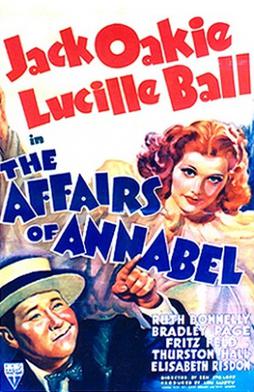
The Affairs of Annabel is a 1938 American comedy film directed by Benjamin Stoloff and starring Lucille Ball, Jack Oakie and Ruth Donnelly. It was produced and distributed by RKO Pictures. The film was followed by the sequel Annabel Takes a Tour the same year, also starring Oakie, Ball and Donnelly.

Günther Edward Arnold Schneider was an American actor of the stage and screen.

Robber baron is a term of social criticism originally applied to certain wealthy and powerful 19th-century American businessmen. The term appeared as early as the August 1870 issue of The Atlantic Monthly magazine. By the late 19th century, the term was typically applied to businessmen who used exploitative practices to amass their wealth. Those practices included exerting control over natural resources, influencing high levels of government, paying subsistence wages, squashing competition by acquiring their competitors to create monopolies and raise prices, and schemes to sell stock at inflated prices to unsuspecting investors. The term combines the sense of criminal ("robber") and illegitimate aristocracy.
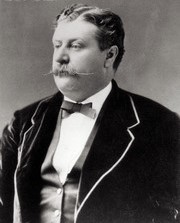
James Fisk Jr., known variously as "Big Jim", "Diamond Jim", and "Jubilee Jim" – was an American stockbroker and corporate executive who has been referred to as one of the "robber barons" of the Gilded Age. Though Fisk was admired by the working class of New York and the Erie Railroad, he achieved much ill-fame for his role in Black Friday in 1869, where he and his partner Jay Gould befriended the unsuspecting President Ulysses S. Grant in an attempt to use the President's good name in a scheme to corner the gold market in New York City. On January 7, 1872, Fisk was assassinated in New York City, in relation to his business dealings.
Edward Small was an American film producer from the late 1920s through 1970, who was enormously prolific over a 50-year career. He is best known for the movies The Count of Monte Cristo (1934), The Man in the Iron Mask (1939), The Corsican Brothers (1941), Brewster's Millions (1945), Raw Deal (1948), Black Magic (1949), Witness for the Prosecution (1957) and Solomon and Sheba (1959).

The Citadel is a 1938 British drama film based on the 1937 novel of the same name by A. J. Cronin. The film was directed by King Vidor and produced by Victor Saville for Metro-Goldwyn-Mayer British at Denham Studios. It stars Robert Donat and Rosalind Russell. The film and book helped the creation of Britain's NHS in 1947.
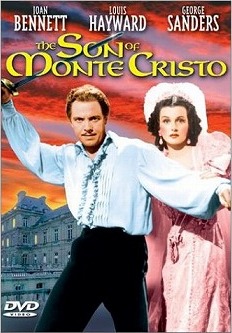
The Son of Monte Cristo is a 1940 American black-and-white swashbuckling adventure film from United Artists, produced by Edward Small, directed by Rowland V. Lee, that stars Louis Hayward, Joan Bennett, and George Sanders. The Small production uses the same sets and many of the same cast and production crew as his previous year's production of The Man in the Iron Mask. Hayward returned to star in Small's The Return of Monte Cristo (1946).

Rowland Vance Lee was an American film director, actor, writer, and producer.

The Eagle and the Hawk is a 1933 American Pre-Code aerial war film set in World War I. It was directed by Stuart Walker and Mitchell Leisen and was based on an original story by John Monk Saunders. The film stars Fredric March and Cary Grant as Royal Flying Corps fighter pilots. The supporting cast includes Carole Lombard, Jack Oakie, and Sir Guy Standing.

Pike's Opera House, later renamed the Grand Opera House, was a theater in New York City on the northwest corner of 8th Avenue and 23rd Street, in the Chelsea neighborhood of Manhattan. It was constructed in 1868, at a cost of a million dollars, for distiller and entrepreneur Samuel N. Pike (1822–1872) of Cincinnati. The building survived in altered form until 1960 as an RKO movie theater, after which it was replaced by part of Penn South, an urban renewal housing development.

New Faces of 1937 is a 1937 American musical film directed by Leigh Jason and starring Joe Penner, Milton Berle and Harriet Hilliard. Its plot is similar to The Producers (1968). Intended as the first film of an annual RKO Pictures revue series, poor reception ended plans for future productions.

That Girl from Paris is a 1936 American musical comedy film directed by Leigh Jason and starring Lily Pons, Jack Oakie, and Gene Raymond. The film made a profit of $101,000. John O. Aalberg was nominated for an Academy Award in the category Sound Recording.
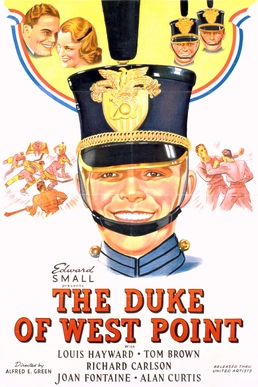
The Duke of West Point is a 1938 American drama film directed by Alfred E. Green and starring Louis Hayward, Joan Fontaine and Tom Brown. It was described as "A Yank at Oxford in reverse".
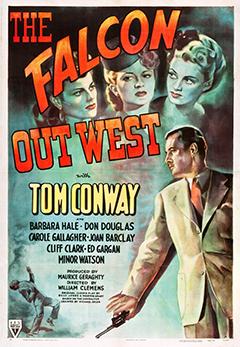
The Falcon Out West is a 1944 American mystery film directed by William Clemens and starring Tom Conway, Joan Barclay and Barbara Hale. The film was part of RKO's The Falcon series of detective films, this time, a murder set in Texas.
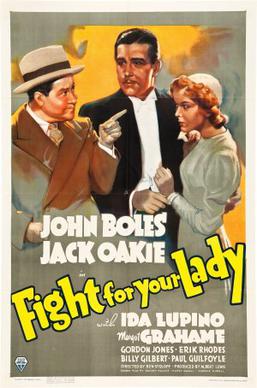
Fight for Your Lady is a 1937 American comedy film directed by Benjamin Stoloff and written by Ernest Pagano, Harry Segall and Harold Daniel Kusel. The film stars John Boles, Jack Oakie, Ida Lupino, Margot Grahame, Gordon Jones, Erik Rhodes, Billy Gilbert and Paul Guilfoyle. The film was released on November 5, 1937, by RKO Pictures.

The Gang Buster is a 1931 American Pre-Code comedy film directed by A. Edward Sutherland, and written by Percy Heath and Joseph L. Mankiewicz. The film stars Jack Oakie, Jean Arthur, William "Stage" Boyd, Wynne Gibson, William Morris and Francis McDonald. The film was released January 17, 1931, by Paramount Pictures.

Helen Josephine Mansfield – known as "Josie" – was an American woman who became famous when one of her two wealthy lovers murdered the other.


















